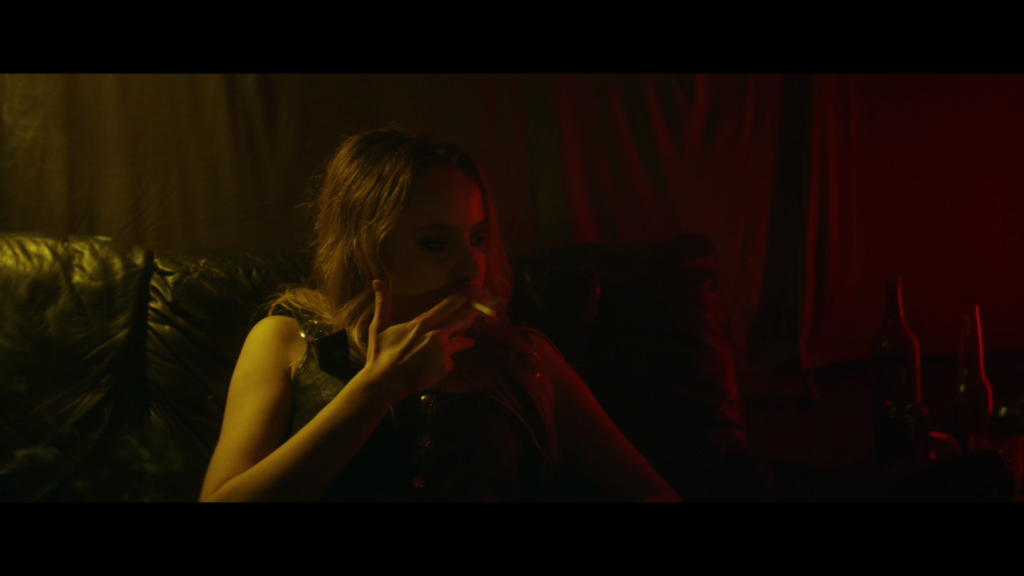Review: Rave (2019)

One of the longest applied trends in genre films is a strong attachement of psychopaths to the classical music compositions. We’ve seen vicious murderers drawing pleasure or inspiration from the scores by Beethoven (Stanley Kubrick’s Clockwork Orange), Mozart (John Woo’s Face/ Off) or J.S. Bach – Hannibal Lecter was immersed in ‘s Goldberg Variations and Aria da Capo between his culinary activities. Memorable for its unusual film score is James Horner’s Jade, with Igor Stravinsky’s Rite of Spring – originally written to express the mysterious rituals of pagan dance – used for the most violent murder scene in the film. But beeing original in seizing for timeless scores by the most famous composers becomes increasingly difficult, no matter if the music serves as a premonition or a driving force behind someone’s madness. We could go as far as stating that we’ve seen it all, unless we are ocasionally proven wrong, which hapens to be the case with the short horror film Rave by the first time director Johannes Magnus Aule.
In his debut, Aule turns Beethovens “Symphony N°9” into a wild drug-fuelled rave party, with an endless wave of arms swaying to its rythm. Even if the acoustic illusion happens for just a short period of time, it very clearly turns to its trope, announcing mayhem. Aule plays with the original story written by Janar Saaron, and the narrative can be interpreted either as a trip gone pretty bad, or as a party you are happy you never went to. Either way, with Andres Hallik’s editing that sucks you into the beat-loaded dancefloor and spits you out like an old chewing gum, the rythm makes the heart race with the same manic force as the effect of a mysterious drug snorted in the film. The danger doesn’t sneak in, it races in with such speed that it’s barely visible, and when it does appear brief as a flash between the youngsters dancing in trance under the strobe light, its impact on viewer is immediate.

Due to its speed, the shape of evil is unfathomable, and the door to another place of greater dread leads through the very drug that gets consumed in the club’s smokers room. It is not palpable until the very end, swallowing every last trace of human life inside the rave club. Insinuation in direction vampirism is given at one point, but if that’s the case -not that it’s important for the general impression of the film – stays a mystery. Whatever the destructive force that breaths inside of club’s walls is, or wants, doesn’t make any difference. It will come to get every single one that entered the place. Skipping on showing the actual “how”, except in case of one of the girls harming her self under the spell of the drug, Aule keeps the attention with firm grip.
There is no message to pass to the audience, and Rave stands alone as what it is – a horror film that doesn’t want to grow up to become something else. It is there to try to scare you. The film was screened in the Méliès D’Argent Short Film Competition of the Haapsalu Horror and Fantasy Film Festival.
Inspired By the Short Story “Reiverid” by Janar Saaron
Original title: Reiv
Country: Estonia
Language: Estonian
Runtime: 17′
Director: Johannes Magnus Aule
Producer: Aili Maarja
Director of Photography: Gunnar Laal
Production Designer: Fey Piir
Editor: Andres Hallik
Sound Designer: Joonas Taimla
Costume Designers: Kertu Kivisik, Hugo Henri Guthan
Key Makeup Artists: Sigrit Villido, Piret Kaljuste
Visual Effects: Juss Saska
Music: Eisi Mäeots, Motobor
Cast: Kristiin Räägel, Mart Müürisepp, Henesi Schmidt, Kristjan Sarv, Arolin Raudva, Diana Tiidema
















